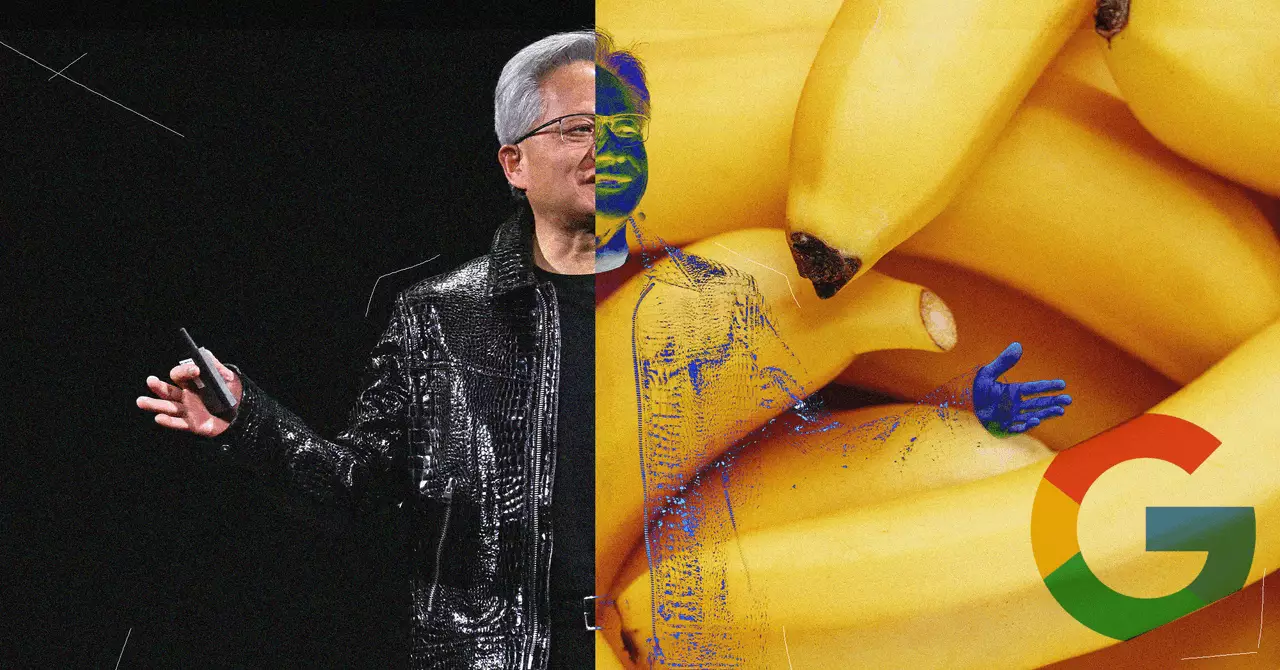In a recent moment of candid exuberance, Nvidia’s CEO Jensen Huang publicly expressed his deep admiration for the innovative capabilities of AI tools, most notably highlighting the popularity of the Gemini Nano Banana image generator. This spontaneous enthusiasm sheds light on Huang’s conviction that artificial intelligence is not just a technological frontier but a transformative force capable of reshaping societies. His unabashed praise for Nano Banana underscores a broader belief in the democratizing power of AI, positioning it as a catalyst for inclusivity and rapid advancement across the globe.
Huang’s admiration for Nano Banana isn’t mere fandom; it signals his confidence that AI innovations can revolutionize how we perceive and manipulate digital content. The surge in AI-generated images—recording over 300 million in a few days—demonstrates not only the technical prowess of these tools but also their widespread appeal. As a leader in the AI domain, Huang sees such innovations as stepping stones toward making sophisticated AI accessible to everyone, transcending traditional barriers of expertise and infrastructure. This belief is further reinforced by his advocacy for more investments, particularly in the UK, an ecosystem he believes holds immense untapped potential rooted in historical innovation and academic excellence.
Strategic Investments: A Sign of Confidence in AI’s Future
Huang’s recent actions—announcing a staggering $683 million investment in Nscale and emphasizing partnerships with giants like Microsoft and OpenAI—highlight his commitment to cementing Nvidia’s dominance in the AI landscape. These investments aren’t purely monetary; they serve as a strategic blueprint for cultivating infrastructure that will underpin the next wave of AI development. He anticipates that companies like Nscale will generate trillions in revenue over the coming years, illustrating how hyper-ambitious investments are fueling an ecosystem driven by innovation and economic growth.
What makes Huang’s vision particularly compelling is his personal testimony about AI’s impact on his daily life. His claims that AI has enhanced his learning, writing, and idea formulation are more than mere marketing rhetoric; they provide a glimpse into the future of human-AI collaboration. His daily use of various AI tools, from Gemini to ChatGPT, underpins his argument that AI isn’t just a future technology—it’s an integral part of our present. Huang emphasizes that his experiences are not isolated; they are indicative of a broader shift where AI becomes an indispensable partner in both personal and professional domains.
Redefining Humanity’s Relationship with Technology
What sets Huang apart from many industry leaders is his optimistic outlook on AI’s capacity to bridge societal disparities. He advocates for AI as a democratizing force, insisting that no one should be left behind in technological progress. Huang’s perspective resonates with a broader societal hope that AI can serve as an equalizer—bringing education, knowledge, and opportunity to underserved populations.
However, his enthusiasm also calls for critical reflection. While the potential for AI to close societal gaps is significant, it also raises concerns about access, ethical use, and unintended consequences. Huang’s perspective boldly claims that AI will help rectify disparities on a scale that previous technological revolutions could only dream of. Still, the real challenge lies in translating this optimistic vision into practical, inclusive policies that ensure equitable access and prevent further widening of the digital divide.
AI as a Think Partner and Creativity Catalyst
Huang’s mention of AI as a “thinking partner” signifies a paradigm shift from viewing AI as simply a tool to perceiving it as a collaborator. His descriptions of using AI for research, speech preparation, and creative endeavors suggest a future where human intelligence is augmented—not replaced—by AI systems capable of enhancing productivity and innovation. The different AI assistants he relies on—Gemini for complex technical tasks, Grok for creative pursuits, Perplexity for rapid research, and ChatGPT for daily use—illustrate a nuanced ecosystem designed to complement human skills.
This perspective on AI’s role elevates the conversation from mere efficiency gains to one of profound partnership. Huang hints that this collaboration could unlock new levels of insight, foster creativity, and significantly reduce research and development cycles. If harnessed thoughtfully, such AI-human synergy could accelerate scientific breakthroughs and cultural evolution alike. Nevertheless, skeptics might argue that this dependency risks diminishing human critical thinking or creating over-reliance, making it imperative to develop ethical guidelines and education systems that keep human judgment sharp.
Though Huang’s enthusiasm for AI’s potential is inspiring, it invites reflection on the broader implications of rapid technological progress. His unwavering belief that AI can bridge societal gaps and enhance human life presumes that innovation will be universally accessible and beneficial—a premise that requires careful scrutiny. History warns us that technological revolutions often bring unforeseen consequences, and without deliberate governance, inequalities could deepen even as opportunities expand.
Nonetheless, Huang’s vision stands as a compelling rallying cry for responsible innovation. His conviction that AI is the greatest chance to democratize technology signals a call to action for policymakers, entrepreneurs, and researchers alike: to work together in ensuring that this powerful tool serves humanity’s collective good. Whether AI becomes a force for liberation or a catalyst for new divides hinges on the choices made today—and Huang’s passionate advocacy underscores the urgency of getting it right.

